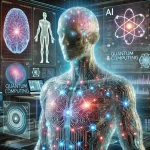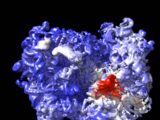
5 big myths of AI and machine learning debuked in bioinformatics and computational biology
January 19, 2024I. Introduction
A. Brief Overview of AI and Machine Learning in Bioinformatics and Computational Biology
In recent years, the integration of artificial intelligence (AI) and machine learning (ML) has revolutionized various scientific disciplines, and one such field that has significantly benefited is bioinformatics and computational biology. Bioinformatics involves the application of computational techniques to analyze biological data, while computational biology focuses on developing and applying computational algorithms to solve complex biological problems.
AI and ML play a pivotal role in these domains by providing innovative solutions for the interpretation and analysis of vast biological datasets. These technologies have proven instrumental in deciphering intricate biological patterns, predicting protein structures, identifying genetic variations, and understanding complex biological processes. The utilization of AI and ML in bioinformatics not only accelerates the pace of research but also opens new avenues for discovery in the realms of genomics, proteomics, and systems biology.
B. Importance of Dispelling Myths for Informed Decision-Making
While the adoption of AI and ML in bioinformatics and computational biology brings about transformative advancements, it is essential to address and dispel myths surrounding these technologies. Myths and misconceptions can hinder the effective integration of AI and ML into research and decision-making processes. Therefore, it becomes imperative to educate stakeholders, researchers, and the general public about the reality of these technologies.
One common misconception is the fear of AI replacing human expertise in biological research. In reality, AI is a complementary tool that enhances human capabilities by automating routine tasks, enabling researchers to focus on more complex and creative aspects of their work. Another prevalent myth is the belief that AI algorithms are inscrutable “black boxes.” Efforts in explainable AI (XAI) have emerged to make these algorithms more interpretable, fostering trust and understanding among researchers and practitioners.
Dispelling these myths is crucial for informed decision-making in the bioinformatics and computational biology fields. As researchers increasingly rely on AI and ML to analyze vast datasets and make predictions, it is essential to have a clear understanding of the capabilities, limitations, and ethical considerations associated with these technologies. In doing so, stakeholders can make informed choices about the application of AI and ML in research, ensuring that these tools contribute meaningfully to advancements in biological sciences.
In the subsequent sections, we will delve into specific applications of AI and ML in bioinformatics and computational biology, highlighting their impact on genomics, proteomics, and systems biology. Additionally, we will explore the challenges and ethical considerations associated with the use of these technologies, emphasizing the need for a balanced and informed approach in harnessing the potential of AI and ML in biological research.
II. Myth 1: AI Can Replace Human Expertise
A. Explanation of the Myth
One prevailing misconception surrounding the integration of AI in bioinformatics and computational biology is the fear that AI has the potential to replace human expertise entirely. This myth suggests that AI algorithms can autonomously handle complex biological analyses, making human researchers obsolete in the process. Such apprehensions often arise from a misunderstanding of the collaborative relationship between AI and human expertise.
B. Debunking the Myth with Examples
- AI as a Tool for Augmentation, Not Replacement
Contrary to the myth, AI is more appropriately viewed as a powerful tool for augmenting human capabilities rather than replacing them. In bioinformatics, AI systems excel at handling repetitive and computationally intensive tasks, such as data preprocessing, feature extraction, and pattern recognition. For instance, in genomics research, AI algorithms can efficiently analyze vast genomic datasets, identifying patterns and potential genetic markers associated with diseases.
Example: In the field of genomics, AI-powered tools like deep learning models have demonstrated remarkable success in predicting gene functions and identifying regulatory elements in DNA sequences. These algorithms significantly expedite the analysis process, allowing researchers to focus on formulating hypotheses, designing experiments, and interpreting complex biological phenomena.
- The Role of Human Expertise in Interpreting AI Results
While AI excels at processing and analyzing large datasets, human expertise remains indispensable in interpreting the results and deriving meaningful biological insights. AI algorithms may identify correlations and patterns, but it is the domain knowledge and intuition of human researchers that enable the contextual understanding of these findings. Moreover, human scientists play a crucial role in designing experiments, validating results, and adapting research strategies based on evolving hypotheses.
Example: In drug discovery, AI algorithms can predict potential drug candidates based on molecular structures and known biological activities. However, human researchers are essential for assessing the biological relevance of these predictions, considering factors such as target specificity, toxicity, and overall therapeutic efficacy. The collaborative effort between AI and human expertise accelerates the drug discovery process while ensuring the reliability and applicability of the results.
Debunking the myth of AI replacing human expertise underscores the importance of a synergistic approach, where AI complements human skills, enhances productivity, and facilitates breakthroughs in bioinformatics and computational biology. Recognizing the symbiotic relationship between AI and human researchers leads to more informed decision-making and fosters a collaborative environment that harnesses the strengths of both entities for scientific advancement.
III. Myth 2: More Data Always Leads to Better Results
A. Explanation of the Myth
Another prevalent myth in the context of AI and bioinformatics is the belief that increasing the volume of data will inevitably result in improved outcomes. This myth suggests that the more data available for analysis, the more accurate and reliable the predictions or insights generated by AI algorithms will be. While data is undeniably crucial, this oversimplification neglects critical considerations regarding the quality of data and potential challenges associated with its abundance.
B. Debunking the Myth with Considerations
- Quality vs. Quantity of Data
Contrary to the myth, the quality of data is often more important than its sheer quantity. In bioinformatics and computational biology, datasets can vary widely in terms of accuracy, completeness, and relevance. Using large volumes of low-quality or noisy data can introduce biases and inaccuracies into AI models, ultimately leading to unreliable results. Therefore, researchers must prioritize data quality over quantity to ensure the robustness and generalizability of their models.
Consideration: In genomic studies, for example, having a smaller but well-curated dataset with accurate annotations and fewer errors can produce more meaningful insights than a larger dataset with inconsistencies. Quality control measures, data cleaning, and rigorous validation are essential steps to enhance the reliability of AI models in the face of diverse biological datasets.
- Overfitting and the Importance of Balanced Datasets
The myth also overlooks the risk of overfitting, a phenomenon where AI models become excessively tailored to the training data, compromising their ability to generalize to new, unseen data. In situations where the dataset is unbalanced, meaning it has an uneven distribution of classes or conditions, the model may develop biases and struggle to make accurate predictions for underrepresented categories.
Consideration: To mitigate the risk of overfitting and ensure model generalization, it is crucial to curate balanced datasets that adequately represent the diversity of biological conditions. Attention to class distribution, stratified sampling, and techniques like data augmentation can contribute to a more robust and reliable AI model that performs well on real-world data.
Debunking the myth that more data always leads to better results emphasizes the importance of thoughtful data curation and the recognition that the value of data lies not only in its quantity but also in its quality and representativeness. Researchers and practitioners in bioinformatics and computational biology should focus on striking a balance, considering the relevance and reliability of the data they use to train and validate AI models, ultimately leading to more accurate and meaningful scientific insights.
IV. Myth 3: AI Algorithms Are Infallible
A. Explanation of the Myth
A pervasive myth surrounding AI, particularly in bioinformatics and computational biology, is the belief that AI algorithms are infallible, capable of providing flawless and unquestionable results. This misconception arises from the assumption that the advanced nature of AI models implies a perfect accuracy in their predictions and analyses. However, it is essential to recognize that AI algorithms, like any tool, are not immune to limitations, challenges, and potential errors.
B. Debunking the Myth with Challenges
- Bias in Algorithms
One significant challenge associated with AI algorithms is the presence of bias. Bias can be introduced during the development and training phases, often reflecting the biases present in the input data or the decisions made by the algorithm developers. In the context of bioinformatics and computational biology, biased algorithms can lead to skewed results, reinforcing existing disparities and potentially hindering advancements in understanding diverse biological contexts.
Challenge: To address bias in AI algorithms, researchers must implement strategies for fairness and transparency. This includes carefully selecting and preprocessing training data, regularly auditing models for bias, and incorporating ethical considerations into algorithm development. By acknowledging and actively mitigating bias, the scientific community can ensure that AI applications in these fields are more equitable and inclusive.
- Limitations and Potential Errors in Predictions
AI algorithms are not omnipotent, and they have inherent limitations. In bioinformatics, where the complexity of biological systems is vast, models may struggle to capture the full spectrum of interactions accurately. Moreover, unforeseen conditions or novel patterns in data may challenge the generalization capabilities of AI algorithms, leading to inaccuracies in predictions.
Challenge: Researchers should be mindful of the limitations of AI models and approach their results with a degree of skepticism. Rigorous validation, robust testing on diverse datasets, and continuous refinement of algorithms based on real-world feedback are essential steps to improve the reliability of AI predictions. Transparent reporting of model performance metrics and uncertainties also contributes to a more informed interpretation of results.
Debunking the myth that AI algorithms are infallible underscores the importance of recognizing their limitations, addressing biases, and adopting a cautious and critical approach to their outputs. By acknowledging these challenges, the scientific community can work towards refining AI models, fostering transparency, and ensuring that these tools contribute responsibly to advancements in bioinformatics and computational biology.
V. Myth 4: AI Applications Are Always Expensive and Complex
A. Explanation of the Myth
A common misconception surrounding the adoption of AI in bioinformatics and computational biology is the belief that AI applications are inherently expensive and complex. This myth may discourage researchers and institutions from exploring AI solutions, assuming that the barriers to entry in terms of cost and technical complexity are insurmountable.
B. Debunking the Myth with Practical Examples
- Open-Source Tools and Resources
Contrary to the myth, there is a wealth of open-source AI tools and resources available, making it accessible for researchers with varying levels of expertise and financial resources. Open-source frameworks such as TensorFlow and PyTorch provide a robust foundation for developing and deploying AI models in bioinformatics. These tools not only reduce costs but also foster collaboration and knowledge-sharing within the scientific community.
Example: The development of deep learning models for genomics analysis can be achieved using open-source frameworks. Researchers can leverage platforms like Bioconda and BioContainers, which offer a collection of bioinformatics tools packaged as containers, facilitating reproducibility and ease of deployment. These open-source initiatives contribute to the democratization of AI applications in bioinformatics.
- Scalability and Accessibility of AI Solutions
AI solutions in bioinformatics are becoming increasingly scalable and accessible. Cloud computing platforms, such as Amazon Web Services (AWS), Google Cloud, and Microsoft Azure, offer infrastructure-as-a-service (IaaS) and platform-as-a-service (PaaS) solutions, enabling researchers to deploy and scale AI applications without the need for significant upfront investments in hardware and infrastructure.
Example: A research team investigating protein-protein interactions can leverage cloud-based AI services to analyze large-scale protein interaction networks. By paying for compute resources on a pay-as-you-go basis, researchers can access powerful computing capabilities without the need for extensive in-house infrastructure, reducing costs and complexity.
Debunking the myth that AI applications are always expensive and complex highlights the democratization of AI technologies, making them more accessible to a broader audience in bioinformatics and computational biology. By embracing open-source tools, cloud computing solutions, and collaborative platforms, researchers can harness the power of AI to accelerate discoveries and advancements in biological sciences without a prohibitive financial burden.
VI. Myth 5: AI Is a Magic Solution for All Bioinformatics Challenges
A. Explanation of the Myth
There exists a pervasive myth that AI is a one-size-fits-all solution capable of addressing every challenge in bioinformatics. This misconception suggests that AI is a magic bullet that can effortlessly solve complex biological problems without any limitations or considerations. Such unrealistic expectations can lead to disappointment and hinder the effective integration of AI with traditional methods in the field.
B. Debunking the Myth with Realistic Expectations
- Understanding the Scope of AI Applications
It is crucial to recognize that while AI brings transformative capabilities to bioinformatics, it is not a universal solution for all challenges. AI excels in specific tasks such as pattern recognition, classification, and prediction, but it may not be the optimal approach for every aspect of bioinformatics and computational biology. Understanding the scope of AI applications helps researchers identify where these technologies can provide the most significant impact.
Realistic Expectation: In genomics, for instance, AI can be highly effective in identifying genomic variants and predicting gene functions. However, tasks such as experimental design, sample preparation, and validation of results may still require traditional laboratory techniques and human expertise. Acknowledging the complementary nature of AI allows researchers to leverage the strengths of both AI and traditional methods for comprehensive solutions.
- Complementary Role of AI in Conjunction with Traditional Methods
Debunking the myth involves emphasizing the complementary role of AI alongside traditional methods in bioinformatics. While AI can automate certain processes and accelerate data analysis, it should be integrated into existing workflows to enhance, rather than replace, traditional approaches. Combining the strengths of AI with the interpretative skills of human researchers fosters a synergistic and holistic approach to problem-solving.
Realistic Expectation: In structural biology, for example, AI algorithms can aid in predicting protein structures, but experimental techniques such as X-ray crystallography or cryo-electron microscopy remain crucial for validating and refining these predictions. Integrating AI-driven predictions with traditional experimental methods allows for a more comprehensive understanding of complex biological structures.
Debunking the myth that AI is a magic solution underscores the importance of setting realistic expectations and recognizing the complementary nature of AI and traditional methods. By understanding the strengths and limitations of each approach, researchers can harness the full potential of AI in bioinformatics while appreciating the ongoing value of established methodologies in advancing biological sciences.
VII. Conclusion
A. Recap of the Debunked Myths in AI and Machine Learning in Bioinformatics
In this exploration of AI and machine learning in bioinformatics and computational biology, we addressed several prevalent myths to provide a more accurate understanding of these technologies. The debunked myths include:
- Myth 1: AI Can Replace Human Expertise
- Explained the misconception and highlighted the collaborative relationship between AI and human expertise.
- Debunked by emphasizing AI as a tool for augmentation and the indispensable role of human interpretation in AI results.
- Myth 2: More Data Always Leads to Better Results
- Explored the belief that an increase in data volume inevitably improves AI outcomes.
- Debunked by underscoring the importance of data quality over quantity and considering challenges such as bias and overfitting.
- Myth 3: AI Algorithms Are Infallible
- Addressed the misconception that AI algorithms provide flawless results.
- Debunked by acknowledging challenges, including bias in algorithms and the limitations and potential errors in predictions.
- Myth 4: AI Applications Are Always Expensive and Complex
- Discussed the myth that AI solutions are invariably costly and intricate.
- Debunked by showcasing the availability of open-source tools, cloud computing, and scalable solutions, making AI accessible and cost-effective.
- Myth 5: AI Is a Magic Solution for All Bioinformatics Challenges
- Explored the unrealistic expectation that AI is a universal remedy for every bioinformatics challenge.
- Debunked by highlighting the importance of understanding the scope of AI applications and recognizing its complementary role alongside traditional methods.
B. Emphasizing the Importance of Informed and Nuanced Perspectives in Adopting AI in Computational Biology
In the rapidly evolving landscape of bioinformatics and computational biology, it is essential to approach the integration of AI with a nuanced and informed perspective. Recognizing the collaborative nature of AI and human expertise, understanding the delicate balance between data quantity and quality, acknowledging the fallibility and limitations of AI algorithms, appreciating the accessibility and scalability of AI solutions, and understanding the complementary role of AI alongside traditional methods are pivotal aspects.
As researchers, practitioners, and stakeholders continue to explore the possibilities of AI in computational biology, adopting a balanced and informed approach ensures that these technologies contribute meaningfully to scientific advancements. Informed decision-making, ethical considerations, and continuous awareness of the evolving landscape will pave the way for responsible and impactful use of AI in unraveling the complexities of biological systems.


















